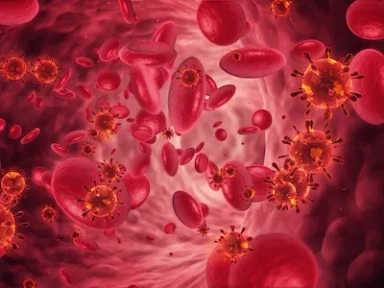{
event: "article_read",
name: `Safety profile of preoperative administration of low-molecular-weight heparin for Lung Cancer population`,
author: ``,
tags: `Thrombosis | Cardiovascular`,
publication_date: ``,
interaction_type: "content"
}
Safety profile of preoperative administration of low-molecular-weight heparin for Lung Cancer population
This randomized clinical trial demonstrated that preoperative administration of low-molecular-weight-heparin (LMWH) is safe and feasible for lung cancer patients preparing to receive minimally invasive surgery.
Key Takeaway
- Preoperative administration of LMWH resulted in no significant effects on coagulationrelated events compared with postoperative start of LMWH for minimally invasive lung , cancer surgery patients.
- This method was found to be safe and feasible with minimal invasive surgery.
- There were no venous thromboembolisms (VTEs) or blood transfusion or other major complications between preoperative LMWH-administration group (PRL) and the postoperative LMWH-administration group (POL) with no significant differences between two groups.
- The operation duration was significantly longer in the PRL vs POL group.
Why This Matters
- There is a strong relationship between lung cancer and VTE, indicated by significant evidence showing that VTE incidence in lung cancer patients increased 22 times more than non-cancer patients, while the risk in lung cancer patients was still sevenfold higher than that in other malignancies.
- American Society of Clinical Oncology Clinical Practice Guideline recommends thromboprophylaxis before surgery and continuing for at least 7–10 days for cancer patients undergoing major surgery.
- There are no clear guidelines, no academic organization’s definite instructions, and no dependable clinical experiments for conducting preoperative anticoagulation.
- This study was innovatively designed to testify whether preoperative administration of LMWH in lung cancer patients was safe and feasible.
Study Design
- This trial was a prospective study in West China Hospital from July 2017 to June 2018 (ChiCTR2000040547) where patients prepared to undergo lung cancer surgery were randomly divided into PRL and POL groups with 4000 IU per day dosage. All patients received thromboprophylaxis until discharge.
- Inclusion criteria: Patients aged 18–75 years without any preoperative VTEs (both VTE history and current screening); intended for video-assisted thoracoscopic major thoracic surgery (including lobectomy and sub lobar resection); diagnosed pathologically with primary lung cancer
- Exclusion criteria: Coagulation disorders (preoperative international normalized ratio [INR] >1.5, or blood platelet count <50 × 109/L); receiving any therapeutic anticoagulation preoperatively; undergoing preoperative planned or intraoperative converted open thoracic surgery; severe renal or liver dysfunction; suffered intraoperative bleeding (>500 ml owing to vessels rupture); rejected to continue the study at any point of the study; on menstruation perioperatively
- Endpoints: Postoperative coagulation function parameters; postoperative drainage data; hematologic data; intraoperative bleeding volume; reoperation rates; surgical time
Key Results
- A total of 246 patients were recruited from July 2017 to June 2018 in this study; patients were randomly allocated (N = 230) to PRL (n = 108) and POL (n = 122) groups.
- Finally, 212 participants were included in the analysis (PRL group: n = 101; mean age, 55.88 ± 10.11 years; POL group: n = 111; mean age, 58.17 ± 9.99 years).
- 146/212 cases were analyzed on postoperative day 3 for coagulation profile (POL [n = 85] and PRL [n = 61]).
- No significant differences were found in coagulation parameters between the POL and PRL groups on first postoperative day: Prothrombin time (PT) (P = 0.158); activated partial thromboplastin time (APTT) (P = 0.339); thrombin time (TT) (P = 0.402); fibrinogen (FIB) (P = 0.806); INR (P = 0.190)
- Drainage data were comparable between the groups: Drainage duration (P = 0.165); mean drainage volume (P = 0.795); total drainage volume (P = 0.445)
- No difference was noted on postoperative day 1 between the two groups regarding intraoperative bleeding volumes (P = 0.195), postoperative hemoglobin value (P = 0.735), and platelet count (P = 0.472).
- The reoperation rate was comparable between the two groups (P = 0.606).
- Surgical time/operation duration in the PRL group was significantly longer than that in the POL group (117.15 ± 41.63 vs 104.13 ± 29.07 minutes, P = 0.008).
- Coagulation function parameters on postoperative day 3 were not significantly different between POL vs PRL groups: PT (P = 0.173); APPT (P = 0.712); TT (P = 0.951); FIB (P = 0.633); INR (P = 0.492); PLT (P = 0.141); HGB (P = 0.247)
Key limitations
- Sample size was relatively small, thus minimizing evidence grade of results.
- Postoperative blood examination was conducted in the morning (around 7 o’clock) but not at a specific point after LMWH administration.
- Lack of VTE occurrence in both groups was less convincing for preoperative start of LMWH providing sufficient thromboprophylaxis.
- Participants included were assessed at the early stage of lung cancer.
- Result could not be expanded to cover other races as only Chinese patients were included.
- A-Lai GH, Zhuo ZG, Li G, Song TN, Xu ZJ, Shen X, et al. Safety profile of preoperative administration of low-molecular-weight heparin on minimally invasive lung cancer surgery: a randomized controlled trial. BMC Surg. 2021;21(1):250. doi: 10.1186/ s12893–021–01244–w. PMID:34011342.
Related articles
MAT-BH-2100984/v2/Jun 2023




